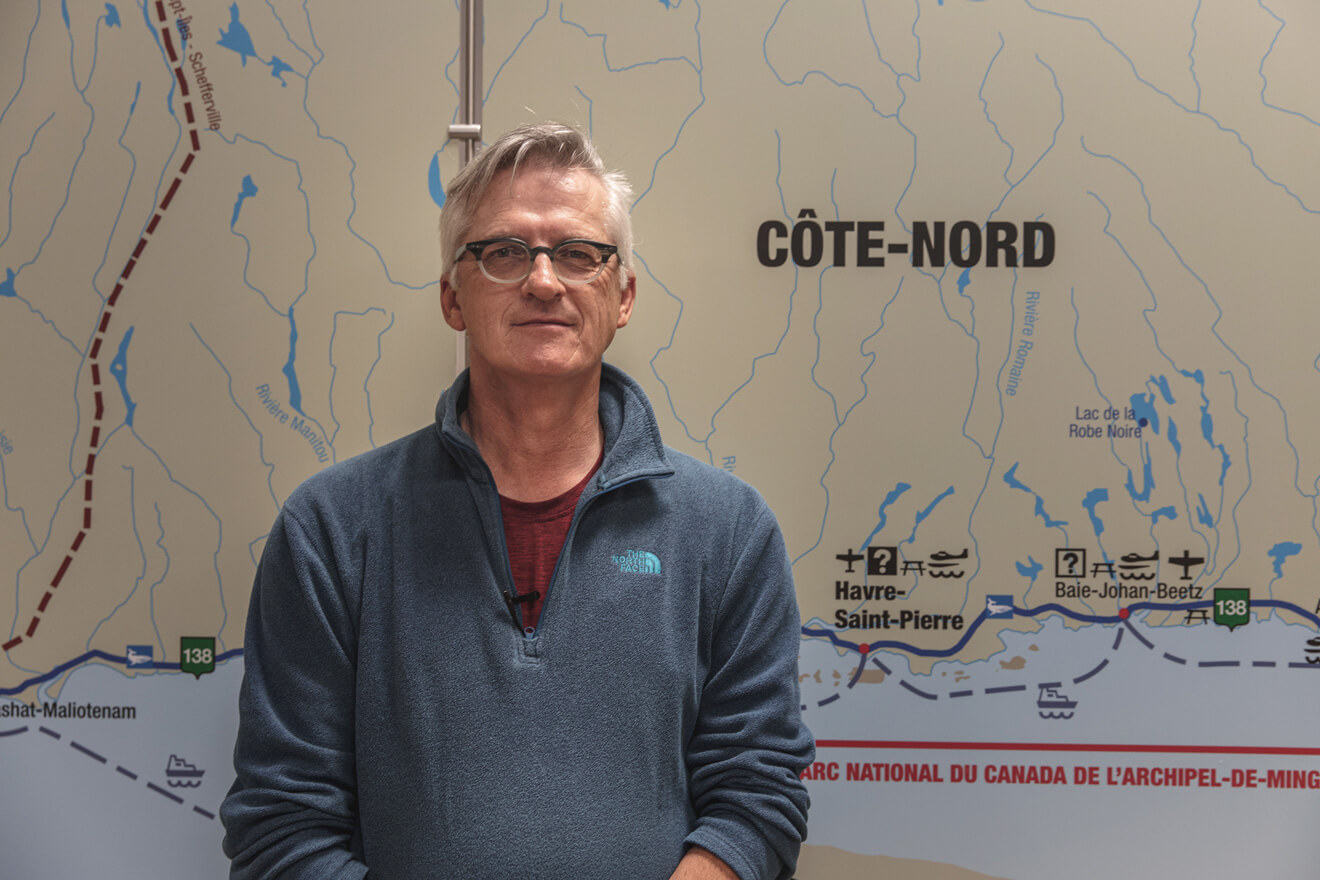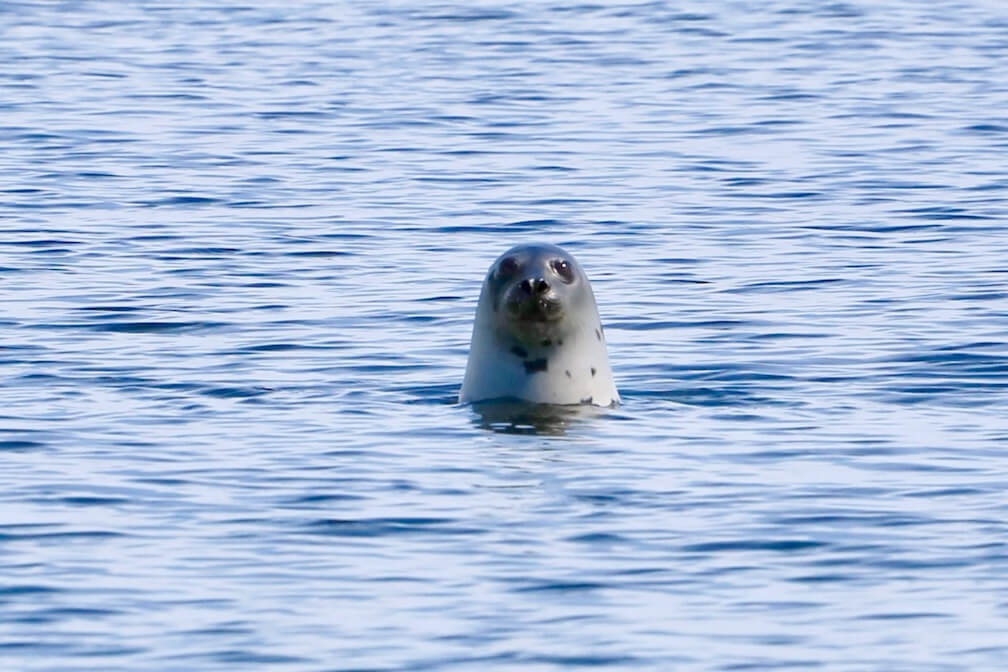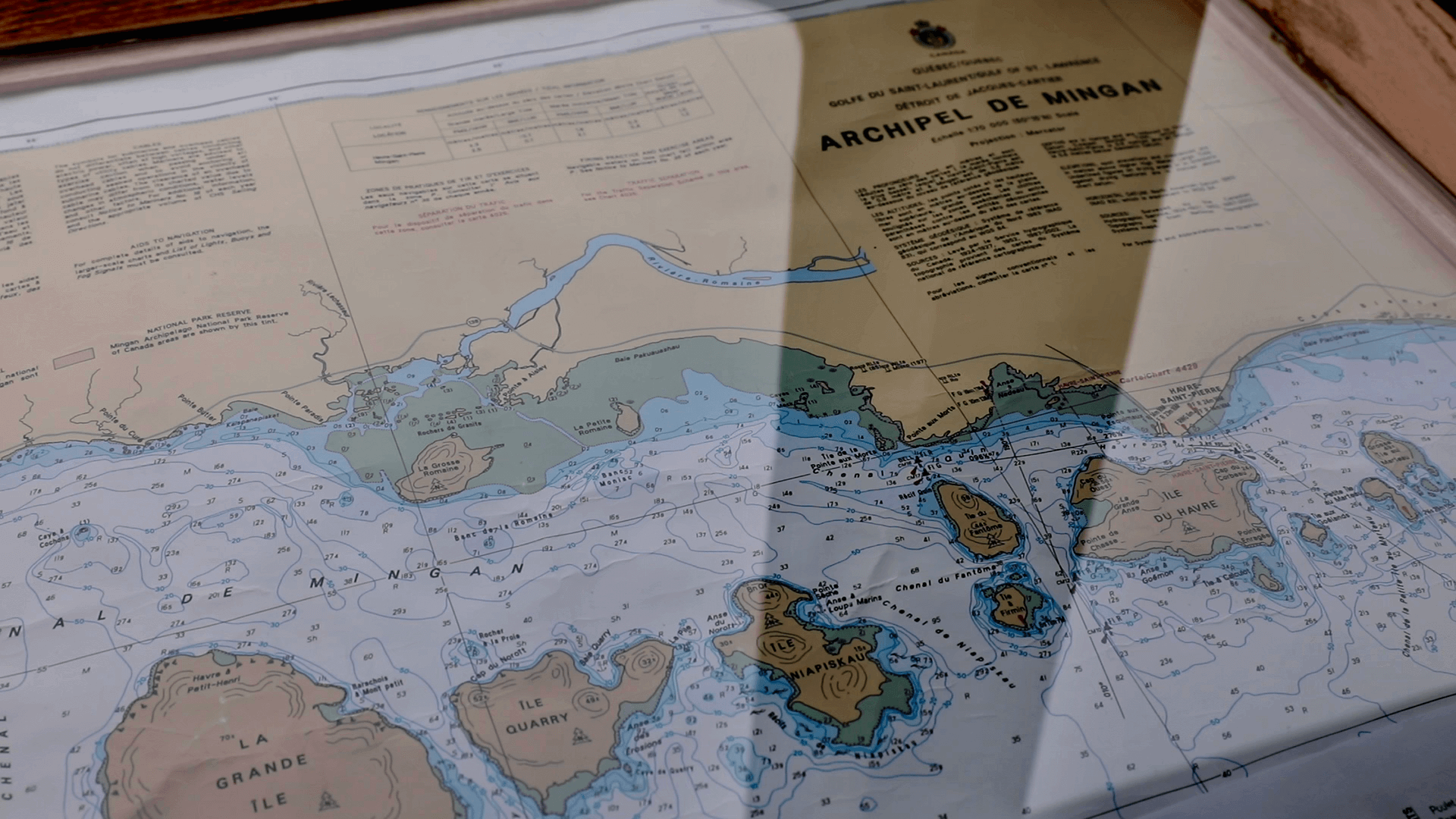This article is part of a series of portraits of people involved in some way with whales on the North Shore. Of Quebec As part of the Whale Route Documentation Project, meet these colourful characters who define the face of the region. Discover their stories that will bring you to life or relive the wonderful stories of the St. Lawrence River and its giant marine creatures!
Guy Côté was one of the first guides to work for Parks Canada in the Mingan Archipelago. Perhaps you’ll have the chance to accompany him out to the islands!
For 40 years, the harbour has been his home, and the islands, his playground!
A Côte-Nord native and the son of resident of Tête-à-la-Baleine, a village accessible only by boat or plane, Guy tells us a little story about the Whale Route, which has only existed in its current form for twenty years. “Even if nowadays this road is very touristy, at the same time it takes us back through a real journey in time,” describes the guide and historian.
“The Whale Route is also an important migratory route for the mammals that humans hunted to take advantage of the proximity of the sea.”
“Travelling the Whale Route means observing these whales and seals that are part of our culture and history.” – Guy Côté
A migratory and feeding route for the animals, certainly, but also an important former trade and supply route for humans. “The Basques and Norwegians came to use the shoal off the coast of Magpie as well as the Mingan Islands to hunt seals and whales for their oil,” explains Guy.
Guy reminds us that seal meat was also an important source of protein for coastal peoples. His grandmother regularly prepared seal for him during his childhood. Even today, canned seal is found at the local Vigneault market.
“Travelling the Whale Route means observing these whales and seals that are part of our culture and history.” He tells us that it is common here to hear locals say that at such and such dock at such and such time, a baleinot (affectionate nickname given to whales in the region) will show up, like an old friend that visits year after year.
“More than anything, it’s an ecosystem waiting for you.”
According to him, in the islands, it is common to see minke whales, humpback whales, seals, porpoises and even basking sharks. As for more noteworthy observations, he mentions pilot whales, white-sided dolphins, or even killer whales that also venture into the Mingan archipelago.
Guy describes a childhood memory on the Havre-Saint-Pierre wharf, where a minke whale was being chased by a killer whale. Killer whales seldom visit these parts of the Gulf. It was later on a documentary expedition that Guy and his film crew were lucky enough to film Jackknife and the rest of his quartet. Killer whales marked the region in the 1980’s and the child’s imagination in him. “All kinds of spectacles are waiting for you offshore!








